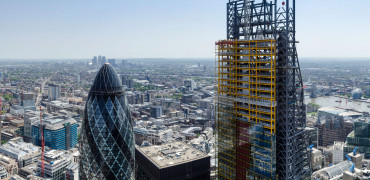The pace of this change has increased considerably since the year 2000 when previously our biggest concern had been whether technology, as we knew it back then, would collapse around us as the Y2K bug went to work.
When the clocks struck midnight on December 31, 1999 and the world carried on turning, it appeared to kick-start and increased desire to embrace technology in just about every aspect of our lives.
One obvious area has been in energy use, in terms of HVAC, lighting and the safety and security of a building or complex. Air conditioning and lighting systems, along with fire and safety measures, are becoming smarter, combining occupancy detection and light sensors with low power LED lights.
With our new-found confidence in innovation and automation, we have encouraged the use of technology. The introduction of smart controls has been one of the most interesting and important revelations.
Some systems are taking this further still, adding temperature and humidity detection to create a controlled ecosystem. These systems can gather data from the room space for provision to energy and facility management systems.
Automatic control
The next step is for the technology to condition the building according to a person’s location within it at any given time. We’re now seeing products such as ceiling cassettes with built-in 3D Sensors which can tell how many people are in a room or even when it is empty, switching off the heating or cooling to conserve energy.
Once these devices are equipped with people’s personal profiles, the building systems then have the capacity to personalise the space according to their preferences, and support other applications, such as the presentation of tailored information to individuals via digital signage systems.
Energy management has risen up the priority list of building users and the systems behind it have become increasingly sophisticated. Analytics of some kind lies at the heart of most air conditioning controllers and Building Energy Management System (BEMS) solutions, ranging from simple reporting and graphics to advanced analytics, which can typically identify ‘abnormal’ usage patterns and forecast future trends.
The more sophisticated systems enable the energy consumption of building services to be reduced in a targeted way at times of peak demand, for example by temporarily reducing the consumption of an HVAC system, reducing the risk of blackouts and potentially earning revenues.
There is an evolution towards multi-valent heating, ventilation and air-conditioning (HVAC) systems, Wi-Fi-enabled, self-learning programmable thermostats, smart energy management, on-site energy production, renewable energy sources, energy storage, and even plug-in electric vehicles.
Smart technologies may also extend to BIM - Building Information Modelling. The objectives of BIM are fault-free construction, reduced construction miles, and compressed timescales.
Whilst the technology behind building automation is becoming smarter, it is also becoming more complex. However, the end user does not want to know about this complexity. Arriving at the building, the technology should be invisible to the user. He or she cares only that the conditions are just right, and on departing, the building should take care of itself - automatically locking and switching things off.
That is where smart technology can add real value.


